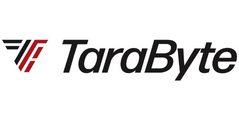I love Fishbowl and the way it seamlessly integrates with QuickBooks to give manufacturers, warehouse operators, and others a robust inventory management system.
However, as with any system that involves a variety of people and moving parts, mistakes are often made. Here are four of the common Fishbowl errors that I see:
1) Failing to reconcile Fishbowl & QuickBooks at the outset
As I explained in my previous article on “The Surprisingly Common $1 Million Error,” you’ve got to do this reconciliation at the “Go Live” point, before any operating transactions.
2) Mapping inventory parts to the wrong account
There are two places where you can map new inventory parts in Fishbowl to accounts in the QuickBooks Chart of Accounts. There is the default mapping, which is mandatory and based on the Fishbowl part type, and there’s individual part account mappings, which are optional.
A common error I see in the field is people use the individual account mappings, but map to the wrong account. Inventory parts should be mapped to an Inventory Asset account. Non-inventory parts should be mapped to an Expense or COGS (cost of goods sold) account. Unfortunately, people sometimes get this backwards, causing the company’s P&L and Balance Statements to be wrong.
3) Creating Purchase Orders with zero dollars
Another situation in which this comes up is rooted in a disconnect between Operations and Accounting. What we often see in the field is that Operations cares about quantities and Accounting cares about dollars. So for a new part, Purchasing will cut a Purchase Order with a zero cost amount.
It is never acceptable to issue a Purchase Order with no dollar value. A good guess is always better than a zero. If and when an item is received against a Purchase Order with a zero dollar value then a zero dollar costing layer is created in the inventory system. This means that if you usemove the inventory before ccounting has a chance to reconcile the bill against the receipt, you end up with a 100% variance.
4) Editing inventory transactions in QuickBooks
Remember, in a Fishbowl/QuickBooks environment, it is a one-way push from Fishbowl to QuickBooks. Any edits to the value or date on the QuickBooks side will cause differences between the Fishbowl sub-ledger and the QuickBooks control account. These changes will not flow back to Fishbowl, and all of your numbers will be off.

.png)
